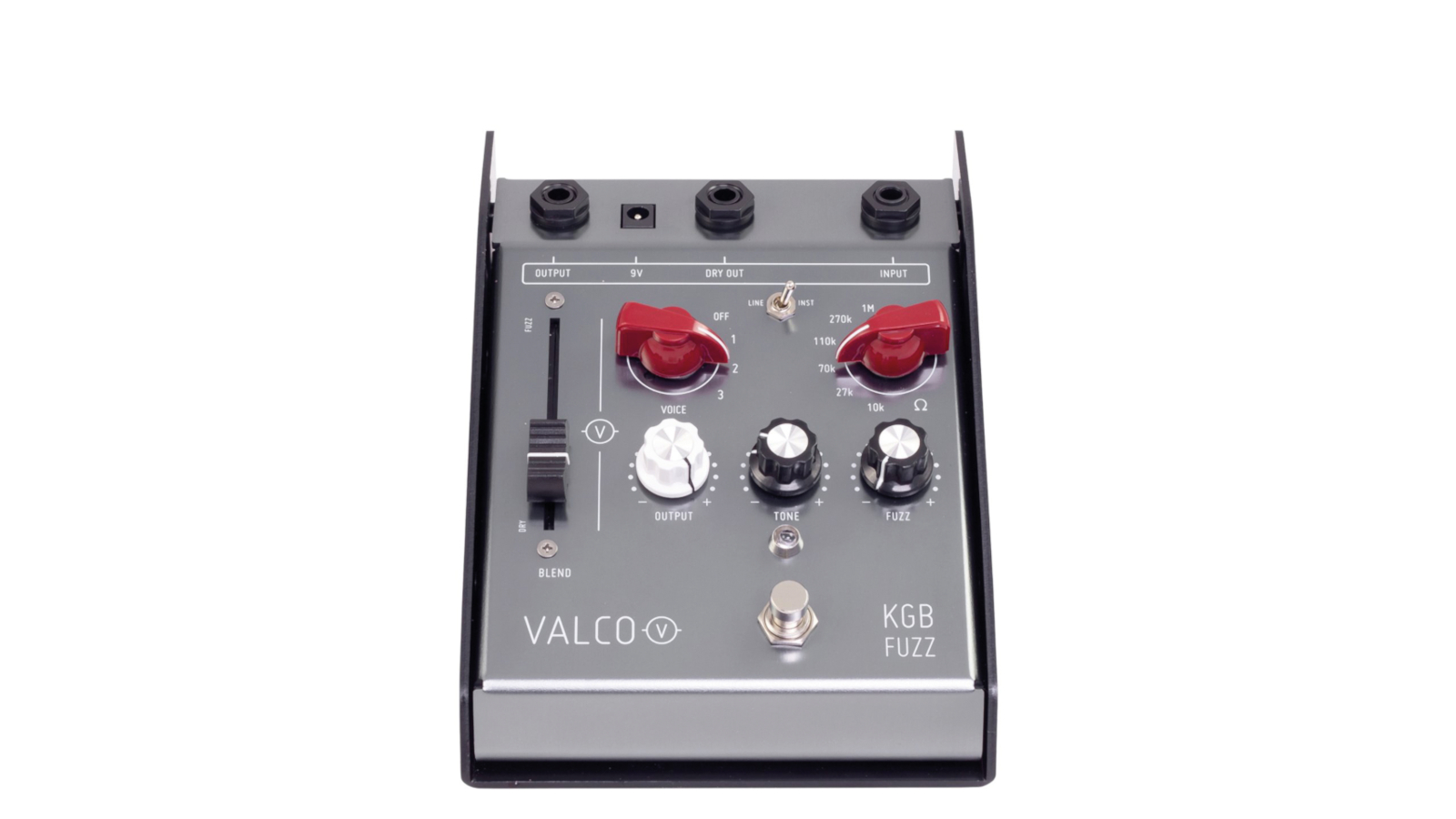GuitarPlayer Verdict
You could easily discover one or more sounds here that you can’t live without.
Pros
- +
Massive ability to fine tune your fuzz sound
- +
Wide range of dirt
- +
High “cool” factor
Cons
- -
Not pedalboard friendly
You can trust Guitar Player.
Valco has become synonymous with a kind of retro cool, largely thanks to the quirky, vibe-laden Supro, Airline and National electric guitars. Now the brand has been revived and is being distributed by Eastwood Guitars of Canada. The first pedal in the series was the BloodBuzz, which, inspired by the rare Lovetone Cheese Source, combined fuzz and overdrive in a dual pedal. Valco’s latest release is the KGB Fuzz.
Though you may hear “KGB” and think about a certain Russian-made vintage fuzz, in fact, it stands for “keys, guitar and bass.” Designer Carl Cook has optimized it for use with all three by including features like a line/instrument switch to adapt to some synthesizers and a blend fader to permit basses to retain attack and low end. The blend option can be a boon to guitarists as well, allowing the addition of clean attack or the smoother sustain of an overdriven amp/pedal to the aggression of the fuzz.

The KGB has two clickable knobs. One is a four-position voice selector, and each voice affects the way the tone knob works. Off disengages the tone control; position 1 introduces a 1kHz dip in the EQ; position 2 adds mids, and position 3 creates gated fuzz tones through bias saturation and an extra input-drive stage.
The other knob is a variable input impedance selector that allows further tone sculpting either with the fuzz engaged or with the blend on full dry. Here, lower settings deliver softer dynamics and transients, while higher settings produce a sharper high-frequency response with more transients and perceived gain. This control helps tune the pedal to your particular pickups for optimal tone and feel.
We found the difference between 10k and 1meg quite obvious, with the in-between settings yielding substantially subtler results. The selector let us dial in the ideal playing response for each guitar, as well as determine the way the pedal reacted to lowering the guitar volume, from immediate clean-up to gradual amounts of dirt.
With a Jazzmaster, Strat or a P-90s-equipped Les Paul feeding the KGB and into a Supro Comet or Fender Blues Junior, we were able to produce a plethora of delightful grind, including smooth Big Muff stylings, more aggressive classic Tone Bender tones, and spitty modern attitude. Setting the voice at position 2 and turning the fuzz knob all the way down even created a credible treble-booster effect. This proved perfect for driving a slightly dirty amp or overdrive pedal to produce epic ’60s/early ’70s British sounds.
With its top-mounted fader, input/output jacks, dry out (permanent dry-signal thru) and nine-volt adapter jack (it also runs on battery power), the KGB looks more like piece of studio gear than a stomp box. And when recording, it could prove invaluable for sculpting just the right grit to carve out a place in the mix. The fader and chicken-head knobs mean the Valco’s retro-cool reputation is in good hands, but the size required for these, and the location of the jacks, make the unit less than practical for a pedalboard. Still, you could easily discover one or more sounds here that you can’t live without onstage and find yourself more than happy to extend your connector cables and make room for this unique pedal.
All the latest guitar news, interviews, lessons, reviews, deals and more, direct to your inbox!
Specifications:
- BUILT Canada
- CONTROLS Impedance selector, line/inst switch, blend fader, fuzz, tone, level, voice
- EXTRAS Direct out
- DIMENSIONS 7.09” x 5.24” x 3.43”
Visit valcofx.com for more information.

